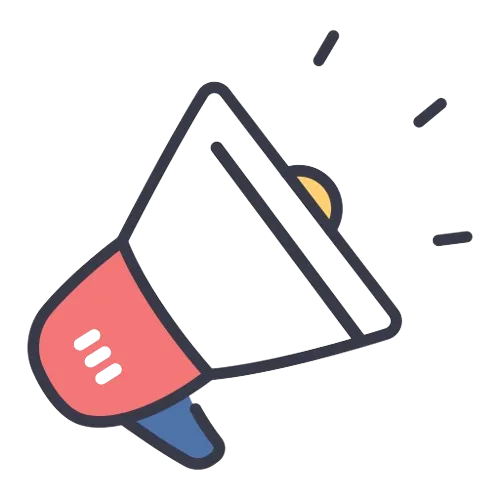After continuous and consistent assessments, the Catalyst team has tweaked a few aspects of Authentication to make it function better while ensuring easier implementation and enhancing overall application security.
Changes to Roles Configuration
Previously, if you had implemented end-user authentication for your applications with the Catalyst Web SDK, you had the option to configure the roles for each user to be added to, by passing the specific Role ID.
However, now, any role passed when a user signs up to the app through end-user Authentication implemented via Web SDK, will be ignored. When your users sign up to your application, they will be added to the default App User role, or to any other default role that you configure in the User Management section. If you specifically require to add users to any other role besides the configured default role, then you can make use of the Custom User Validation feature.
Embedded Authentication Enhancements
To ensure you continue to utilize and implement the Catalyst Embedded Authentication to its fullest potential, you will need to ensure that you follow and apply the instructions listed here to your Catalyst project.
Please read the following pointers carefully and apply them where required:
-
If you are currently employing any other version of the Catalyst Web SDK to add users to your application using Embedded Authentication, you will need to upgrade to Web SDK v4, and reconfigure your embedded authentication setup accordingly.
-
To access the required Web SDK v4 scripts:
- Navigate to the Authentication component, present in the Cloud Scale service. Click Set Up under Native Catalyst Authentication.
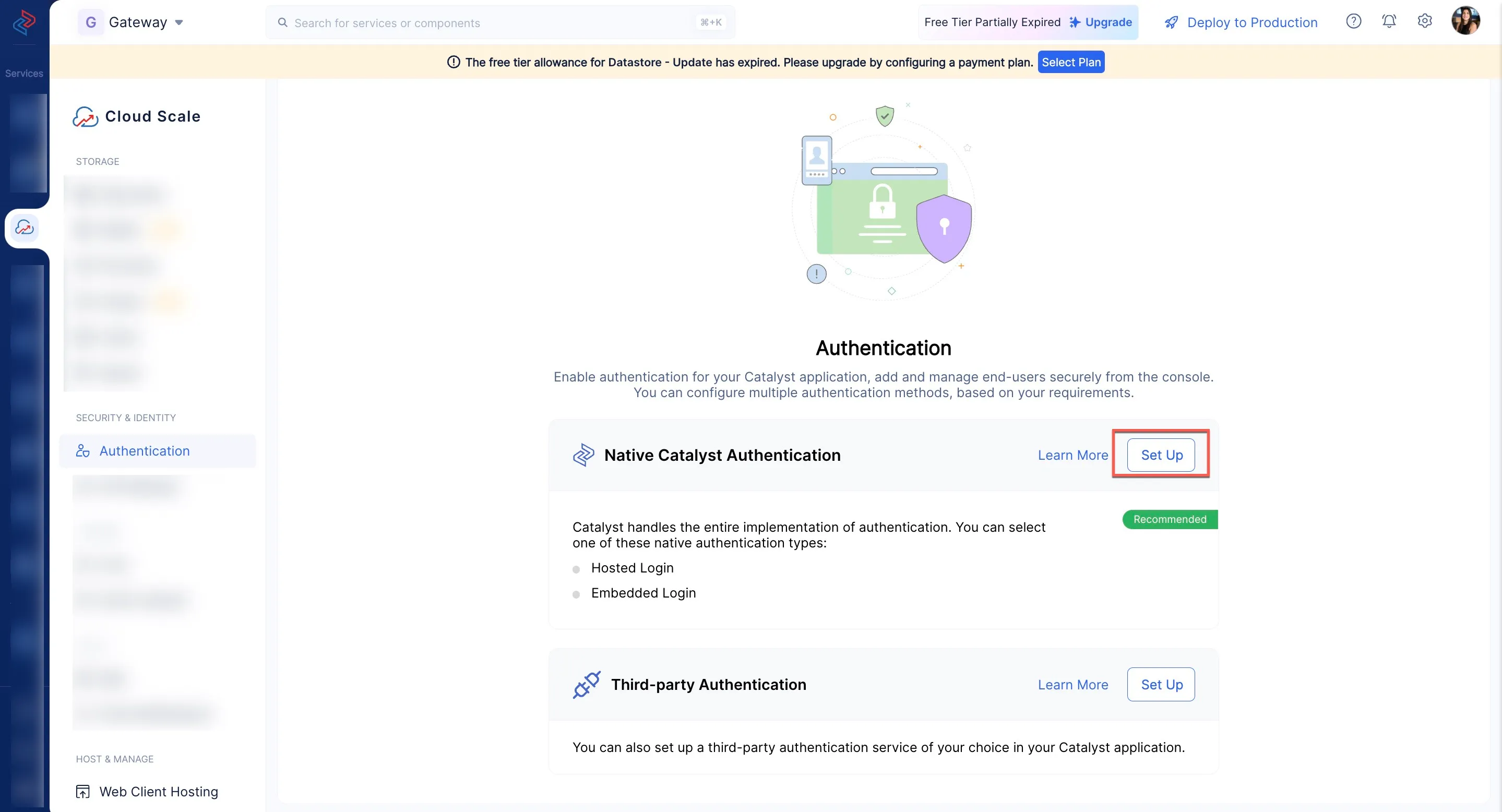
- Select Embedded Authentication and click Next.
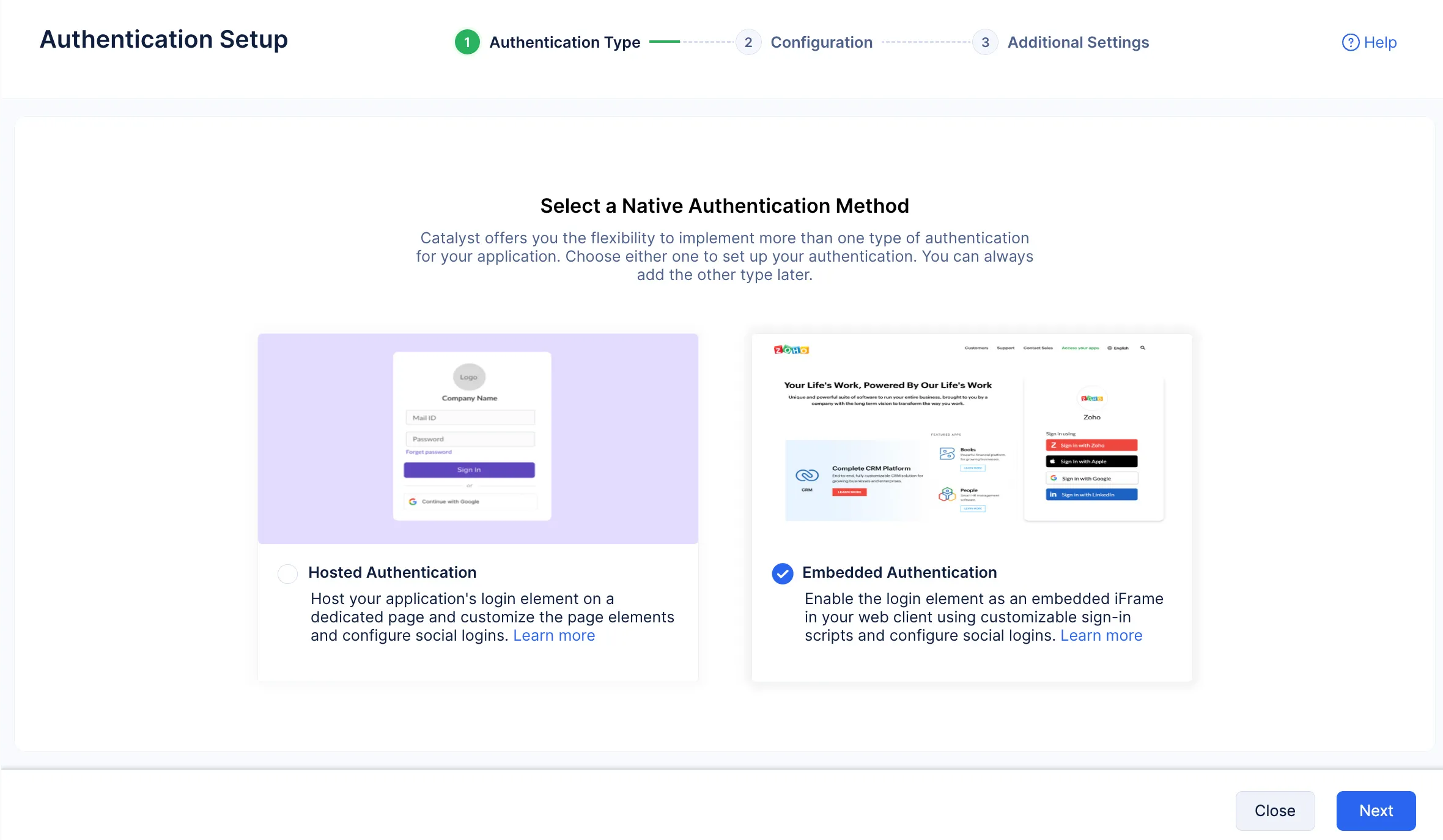
- Ensure you select v4 in the Version drop-down and copy the required code.
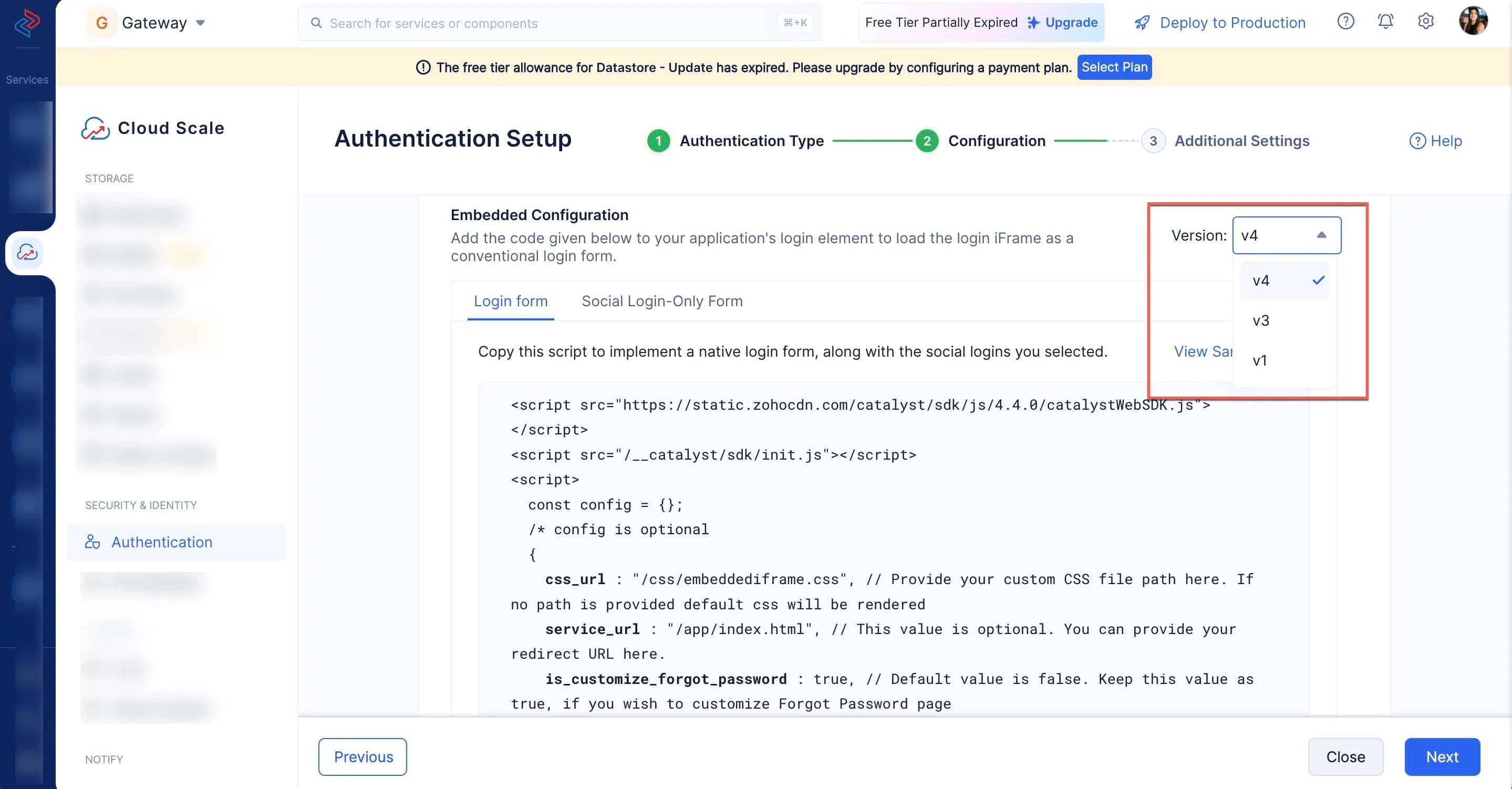
Note: The code snippets are also available in this help page.- Upgrading to Web SDK v4 also allows you to provide our end-users with the options to login to your application using their Microsoft 365, Facebook, or LinkedIn accounts, including the already existing Zoho and Google social login options. Additionally, the newer version allows you to add users seamlessly with better styling and customization control over your login elements.
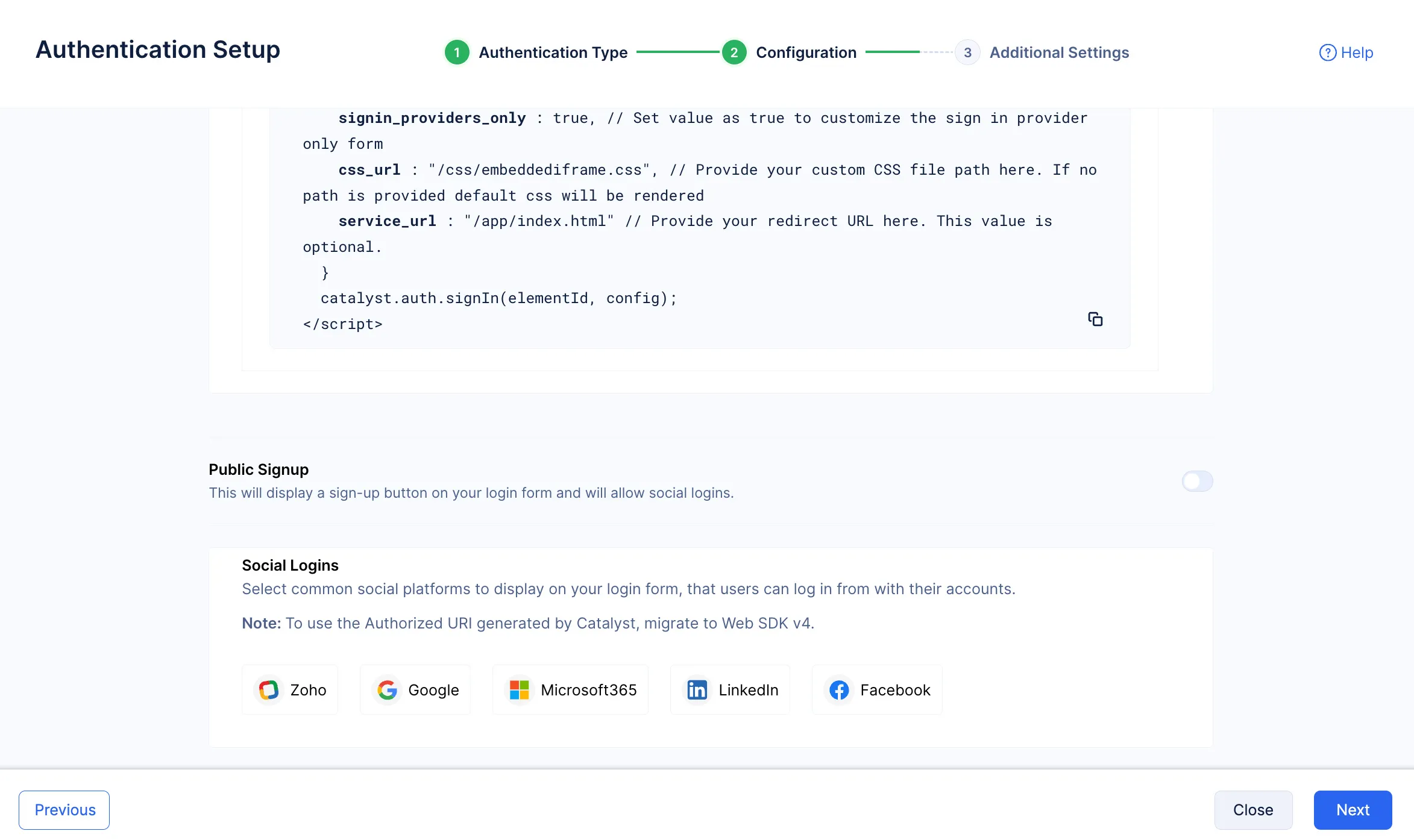
- Navigate to the Authentication component, present in the Cloud Scale service. Click Set Up under Native Catalyst Authentication.
-
On March 31st 2025, all previous versions of the Catalyst Web SDK will cease to function. We strongly urge you to complete the upgrade to Web SDK v4 and the respective configurations before this deadline. The image below illustrates the new default UI look of the embedded login element. The CSS of this page can be customized using the CSS scripts that can be downloaded from this help page.
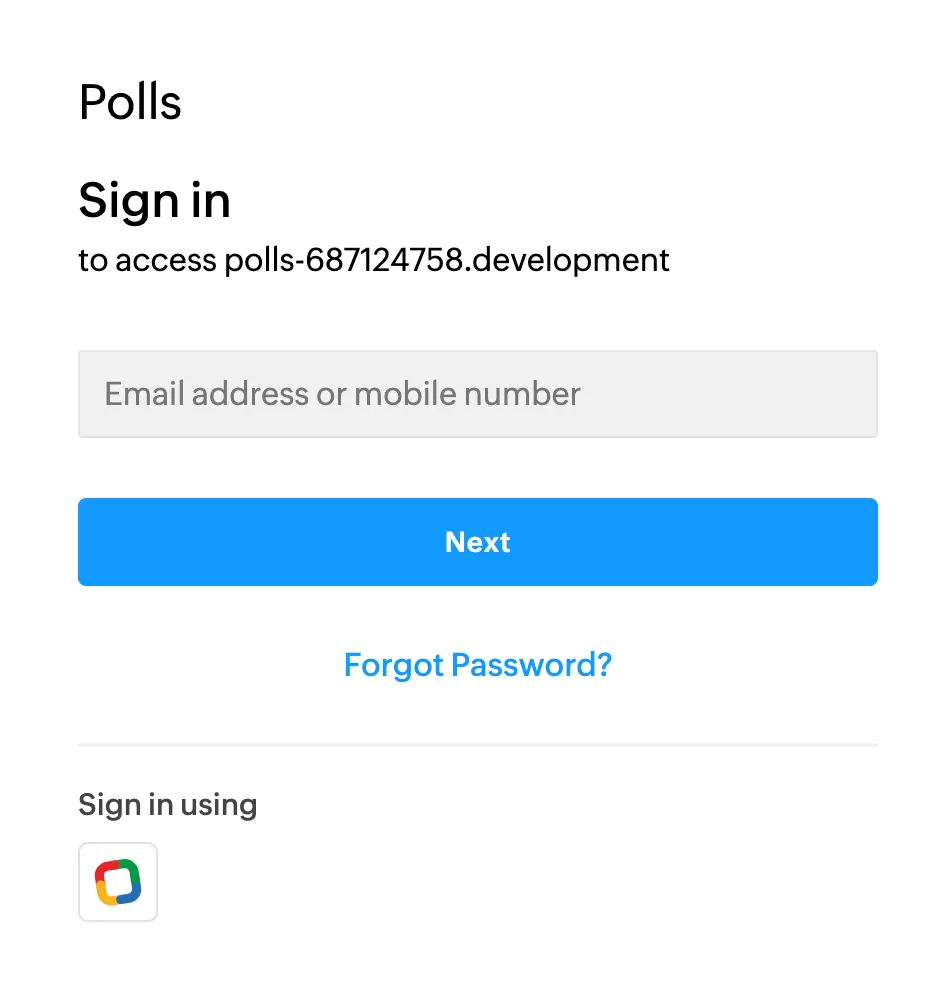
If you continue to use any of the older SDK versions beyond the mentioned deadline, then the CSS elements used in the designing of the embedded authentication element will not function as intended, resulting in unintended UI breakage.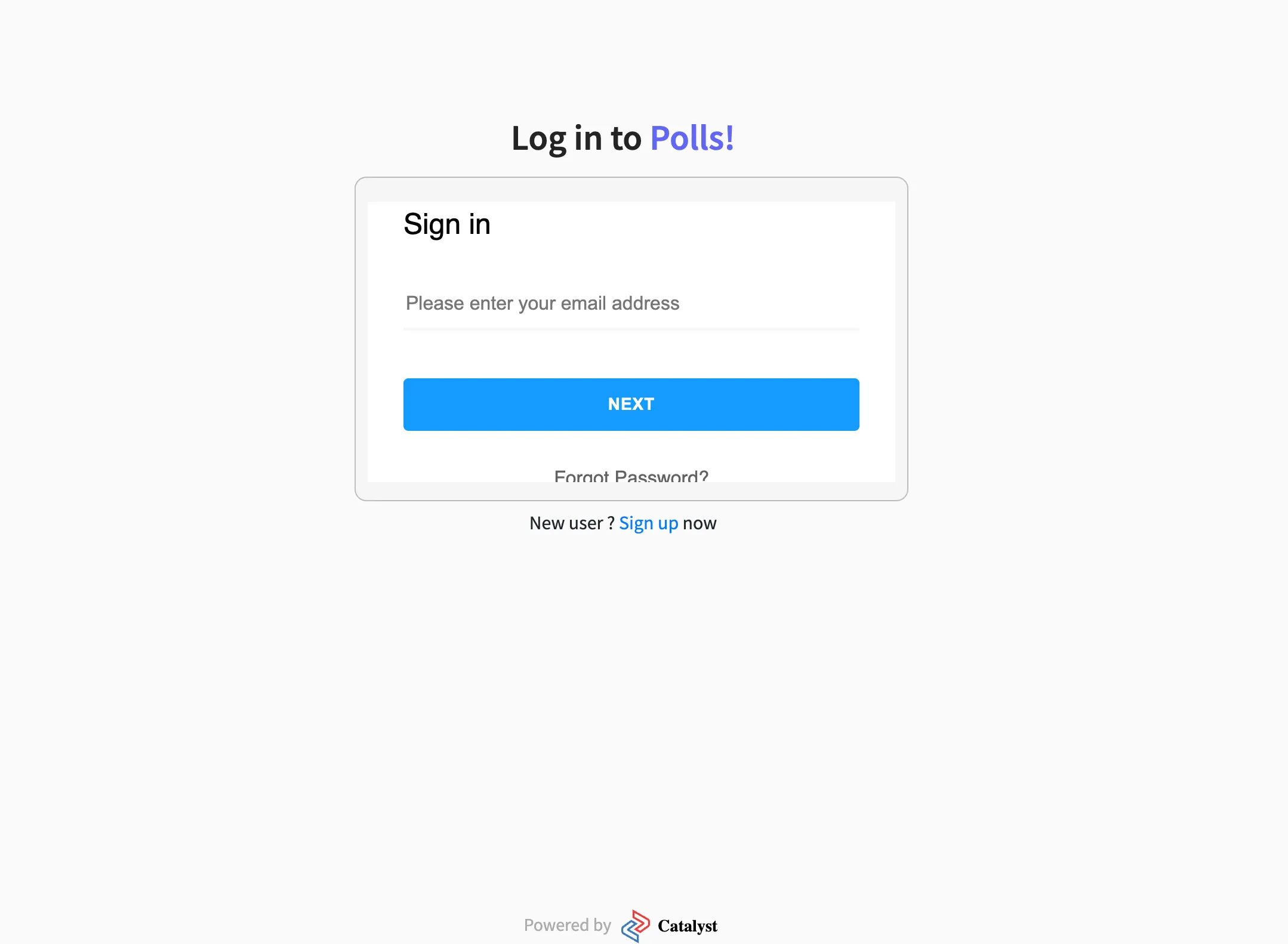
-
Support to implement Google social login has existed since Web SDK v3. However, when you upgrade to Web SDK v4, you will need to reconfigure the redirect URLs accordingly. Steps to configure the Google social login can be found here.

For more information and help, you can reach out to our support team at support@zohocatalyst.com.
Happy Coding!
Team Catalyst
Last Updated 2025-03-03 20:57:01 +0530 IST
Yes
No
Send your feedback to us
